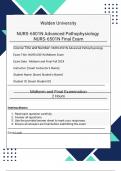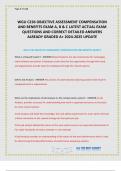Exam (elaborations)
NURS-6501N Advanced Pathophysiology Week 7 & 8: Neurological and Musculoskeletal disorders NURS-6501N Final Exam Review with Verified Solutions | 100% Pass | Graded A+ |
- Institution
- Walden University
NURS-6501N Advanced Pathophysiology Week 7 & 8: Neurological and Musculoskeletal disorders NURS-6501N Final Exam Review with Verified Solutions | 100% Pass | Graded A+ |
[Show more]












